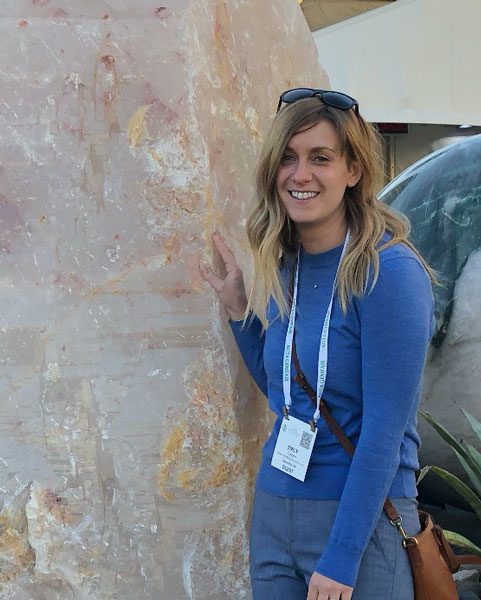UAA Alert! Anchorage Campus Inclement Weather Notice for Thursday, Dec. 4, 2025.
Due to unsafe road conditions for Anchorage and surrounding areas, UAA’s Anchorage campus will be on a delayed start today, Thursday, Dec. 4. Campus will open at 10 a.m. to allow for safer travel.
Emily B. Cahoon, Ph.D.

Term Assistant Professor
Geological Sciences
ebcahoon@alaska.edu
https://sites.google.com/view/teachingportfolio-emilycahoon/home
Geological Sciences
ebcahoon@alaska.edu
https://sites.google.com/view/teachingportfolio-emilycahoon/home
Education
- Ph.D., Earth, Environment, and Society, Portland State University, Portland, OR (2020)
- M.S., Geology, Washington State University, Pullman, WA (2015)
- B.S., Geology, University of Delaware, Newark, DE (2010)
Biography
Dr. Emily Cahoon is a Term Assistant Professor in the Department of Geological Sciences. She teaches courses in petrology, volcanology, environmental geology, and geological data visualization and analysis. Her research pursues questions broadly focused in geochemical, petrologic, and volcanological problems – with an emphasis on magmatic processes related to flood basalt emplacement, crystal growth, and geochemical cycling.Teaching Responsibilities
- GEOLA115 - Environmental Geology
- GEOLA115L - Environmental Geology Lab
- GEOLA315 - Geological Data Visualization & Analysis
- GEOLA320 - Volcanology
- GEOLA322 - Igneous & Metamorphic Petrology
Research Interests
Dr. Cahoon's research explores the timing, emplacement, and petrogenetic evolution of flood basalt lavas by integrating field methods, laboratory instruments, geochemical and thermodynamic modeling. She is particularly interested in the duration of basaltic volcanism and significance of giant plagioclase crystals, which have been documented in numerous continental flood basalt provinces. This interest has led to research on 'sunstones', which are large plagioclase crystals that contain macroscopic inclusions of native copper. Sunstones vary in color due to the speciation of copper, and are recognized as a gemstone by the Gemological Institute of America (GIA). This research aims to characterize the geologic conditions required to form sunstones, and further our understanding of crystal growth and metal enrichment processes during flood basalt magmatism.Dr. Cahoon's geochronological work has resulted in implementation of a new 40Ar/39Ar procedural step for volcanic groundmass preparation using hydrofluoric acid (HF). This research is part of an ongoing collaborative project with Oregon State University’s (OSU) Argon Geochronology Laboratory. The objective is to improve the methodology of high-precision 40Ar/39Ar geochronological studies by reducing the effects of 39Ar recoil, providing geologically meaningful ages for previously undatable rocks.
Publications
Cahoon, E.B., Streck, M.J., Koppers, A.A., and Miggins, D.P., 2020. Reshuffling the Columbia River Basalt chronology—Picture Gorge Basalt, the earliest-and longest-erupting formation. Geology, 48 (4), pp.348-352. (cover photo of publication)Cahoon, E.B., Streck, M.J., and Koppers, A.A.P., 2020, The Picture Gorge Basalt: Internal Stratigraphy, Eruptive Patterns, and its importance for understanding CRBG magmatism (in review)









